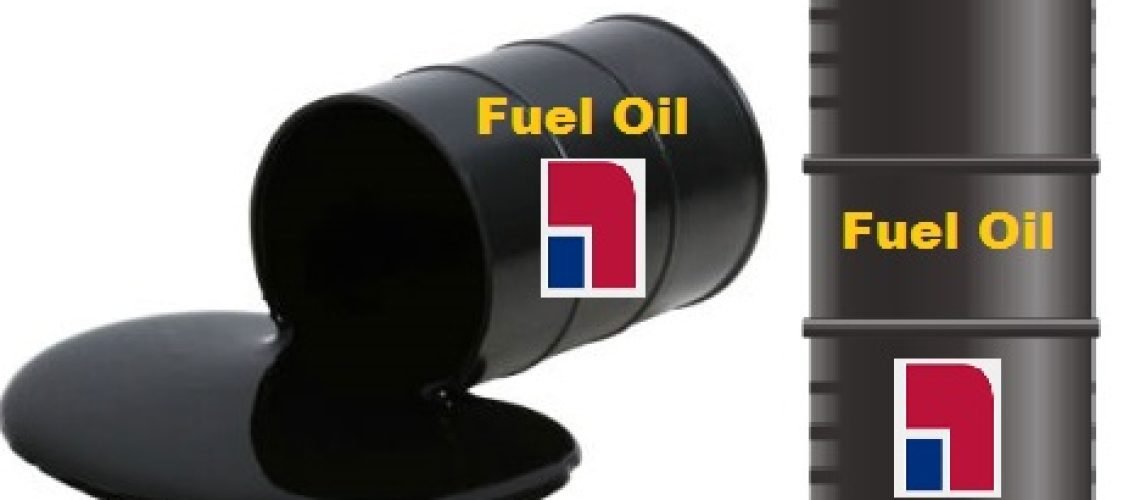Residual fuel oil is the third most important petroleum product after gasoline and diesel. Mostly, the furnace oils or bunker fuel oil are the by-products of refineries, which are blended to produce saleable fuel oil. Refineries, normally, aim to minimize the production of low-valued fuel oil to maximize their profits margins. Residual fuel oil is a bottom-of-the-barrel product blended from the vacuum residue of crude oil distillation, and the residual products from various refining processes, to make the cheapest possible fuel.
Depending on the refinery configuration and process units available, residual fuel oil may be blended from the following refinery streams:
- Atmospheric distillation bottoms/reduced crude (long residue)
- Vacuum distillation bottoms (short residue)
- Visbroken or thermally cracked long or short residue
- Vacuum residue from the hydrocracking unit such as heavy oil
- Vacuum resid from resid desulfurization unit
- Residue from the fractionator bottom of the hydrocracking unit
- Catalytic cracker light cycle (LCO), medium (MCO), and heavy (HCO) cycle oils
- light and heavy vacuum gas oils
- Straight run kerosene and diesel oils
Lighter blending components like straight-run diesel, kerosene, light, and heavy vacuum gas oils are used as a cutter stock to lower the CCR, viscosity, and sulfur content in the fuel oil header. But the use of cutter stocks should be as minimum as possible due to their high price. Straight-run fuel oils do not suffer from the problem of storage stability and do not exhibit the problem of incompatibility in the blending product.
Fuel oil blending is done to make a blend of the available stocks with the least cost to the refinery. Moreover, the refineries also have their fuel oil circuits to burn it in process heaters that do not have strict quality controls. To maintain the saleable fuel oil product, the heavy components are diverted to the refinery fuel oil system on a requirement basis.
Key fuel oil specifications for blending include viscosity, sulfur, and conradson carbon and flashpoint.
Viscosity of Fuel Oil
Viscosity is an important quality parameter of fuel oil from a handling point of view. This is controlled by reducing the share of highly viscous components and increasing the flow of lighter components like diesel, kerosene, LVGO as a cutter stock. Viscosities of residual fuel oils for the marine industry range from 80 to 700 cSt at 50 C.
Sulfur Content
The sulfur content of the residual fuel depends on the vacuum resid sulfur content, which in turn depends on crude processed and refinery processing configuration. Because resid desulfurization processes are expensive, any further processing of resid to reduce sulfur would add to the cost of the residual fuel. The sulfur content of most residual fuel oils is between 3.5 and 4.5 wt % due to the high sulfur content of vacuum residue, which typically constitutes 60 to 70 percent of blended fuel oil. Lowering the share of vacuum bottom, Visbroken bottom, and increasing the share of low sulfur components like straight run diesel, kerosene, gas oils, residue hydrocracking bottom, etc will decline the sulfur in the fuel oil blend.
Conradson Carbon Residue
Conradson carbon residue, commonly known as “Concarbon” or “CCR” is an indication of the coke forming tendency of fuel oil. The controlled value of CCR in fuel oil is normally 10~15 wt %. Blending components Vacuum reside and Visbroken has the highest CCR values respectively.
Reducing the share of vacuum bottom and Visbroken will decrease the CCR in fuel oil. Further, reducing the Visbroken heater outlet temperature will reduce the CCR in the Visbroken products. Finally, adding a cutter stock will also reduce the CCR content.
Stability
The stability of fuel oil is much important from a storage point of view. Fuel oils consisting of thermally cracked hydrocarbons from Visbroken, FCCU cutters (LCO, MCO, and HCO), and residue hydrocracking bottom create stability problems in storage. The quality of the cutter stock is of great importance. Cracked residues have a high concentration of asphaltenes, which must be kept in solution by the use of high aromatic cutter stocks. The use of paraffinic cutter stock can lead to the gradual separation of the asphaltenes in fuel oil storage tanks.
For further information, discussion and questions please comment in the box below or contact at admin@





